This post may contain affiliate links. If you click on one of my affiliate links and make a purchase, I may receive a commission for referring you. This in no way affects your price. Please know that I only recommend resources and items I believe in and highly recommend. You can read my full disclosure statement here.
Struggling to find room for your homeschool setup?
Imagine a clutter-free space that fosters focus and creativity for your child. No more tripping over textbooks or searching for misplaced supplies! These simple to follow homeschool classroom organization hacks will make small spaces look amazing.
Simple Homeschool Classroom Organization Hacks
Organizing your homeschool classroom in a small space requires a bit of creativity, innovative thinking, and planning, but you can still build the homeschool classroom of your dreams! While you may not have the luxury of a dedicated room, you can still create an effective and organized learning environment. Here are some of my best tips on organizing your homeschool classroom, even if you have a small space.
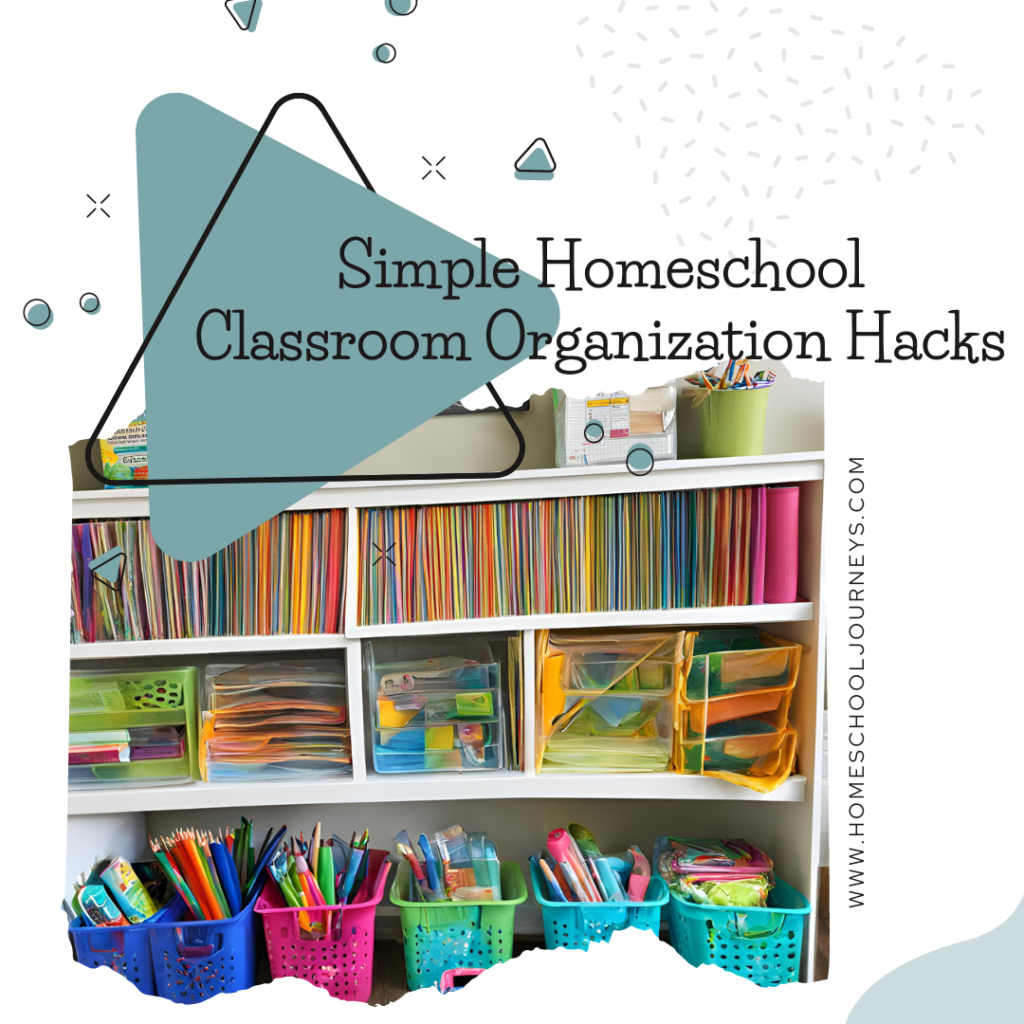
1. Start with a Good Declutter
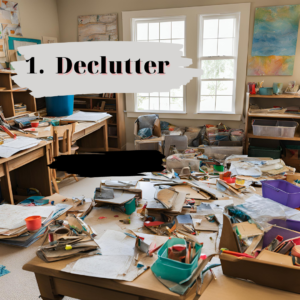
Start by decluttering the space. Remove unnecessary items and only keep materials and supplies essential for homeschooling. Prioritize using this space for learning, and avoid storing non-educational items in it. If you have to have a multifunctional room due to space limitations, look for areas that can be blocked off for learning.
2. Mobile Storage Solutions
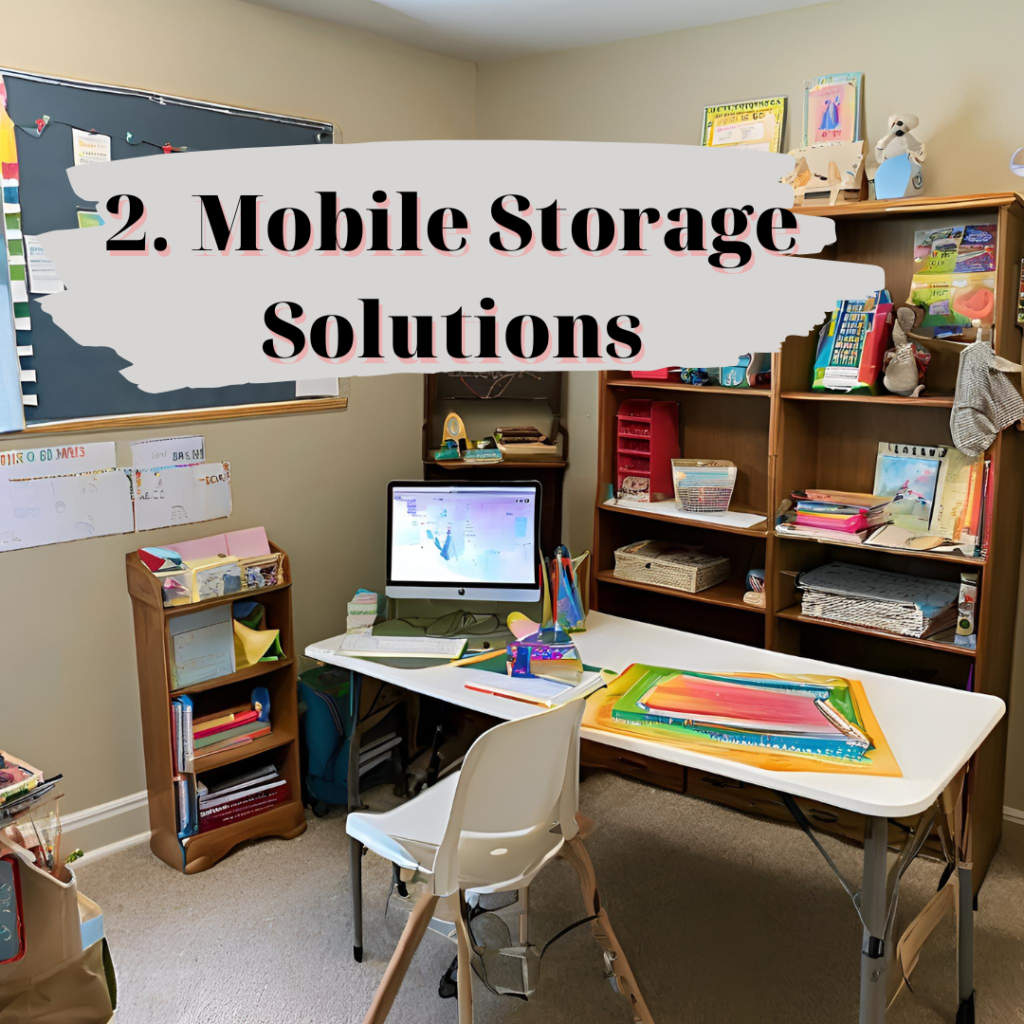
Opt for mobile storage solutions, such as a rolling cart or bins with wheels when possible. These can be moved easily around the room or tucked away under a table or desk when unused. With these mobile solutions, you can organize supplies, art materials, curriculum resources, and more.
3. Utilize Wall Space
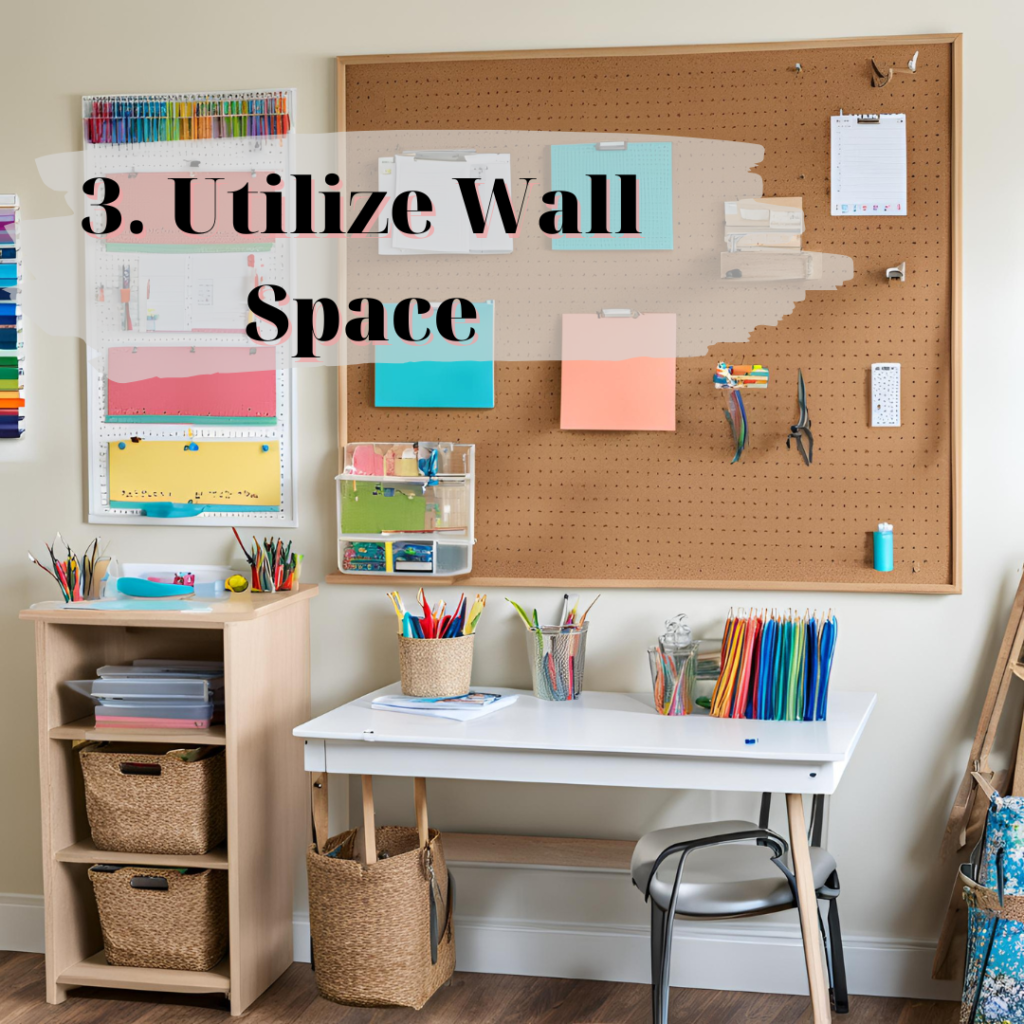
Make use of the walls for storage and organization. Hang a corkboard or whiteboard for scheduling, reminders, and displaying projects. Pegboards with hooks can hold art supplies, headphones, or small items. Don’t let these spaces go to waste so you can utilize every square inch of your homeschool space.
4. Regularly Assess Your Homeschool Classroom
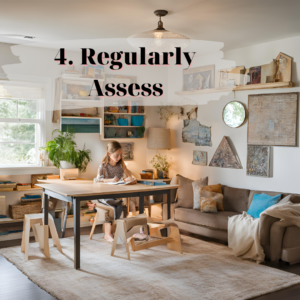
Periodically, go through your organization and see if you need to adjust. Organization sounds great in theory, but sometimes you need to adjust based on your child’s needs and even down to the curriculum you’re using.
5. Use Vertical Storage
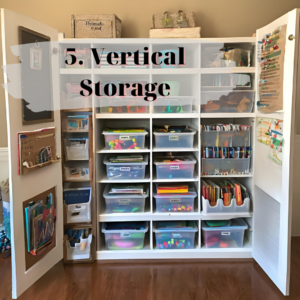
Utilize vertical space to your advantage. Install shelves or wall-mounted organizers to store books, supplies, and teaching materials. Vertical storage not only saves floor space but also keeps everything within reach. This is perfect for working with a small room or needing more floor space.
6. Organize Materials by Subject
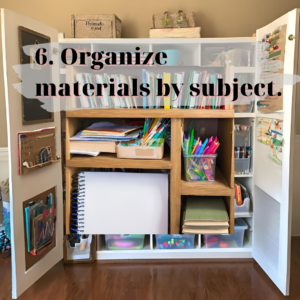
Keep teaching materials and resources organized by subject or topic. Use bins, folders, or baskets to group books, worksheets, and materials together. Label them clearly so you can easily find what you need. This will make things much easier to find and help you locate them easily and know where to store them properly.
7. Think About Furniture Arrangement
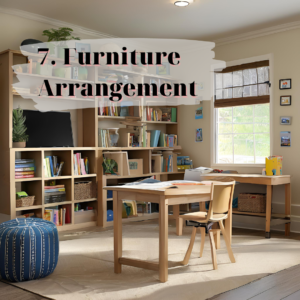
Arrange furniture in a way that optimizes the available space. Consider a U-shaped or L-shaped desk layout to create a functional workspace for you and your child. Ensure there is enough legroom and comfortable seating. The furniture layout can be just as important as the furniture itself!
8. Look for Multi-Functional Furniture
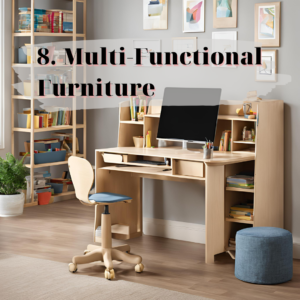
Invest in multi-functional furniture to make the most of your small space. Consider a fold-down desk, wall-mounted shelves, or a table with storage compartments. These pieces can be tucked away when not in use to maximize the available space.
Organization is an ongoing process; making small adjustments as you go is part of the process. Small spaces can be transformed into effective homeschool classrooms, and maximizing your space and keeping it organized will help you create the productive classroom environment your kids look forward to!

I was hooked by this article’s engaging writing style!
The site consistently provides excellent content.
Thank you so much for your kind words! I’m thrilled you enjoyed the article and found the writing style engaging. Your support means the world to me, and I’m so glad you find value in the content here. Stay tuned—there’s plenty more to come!